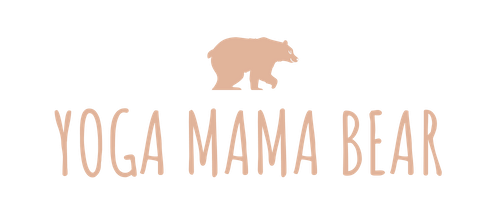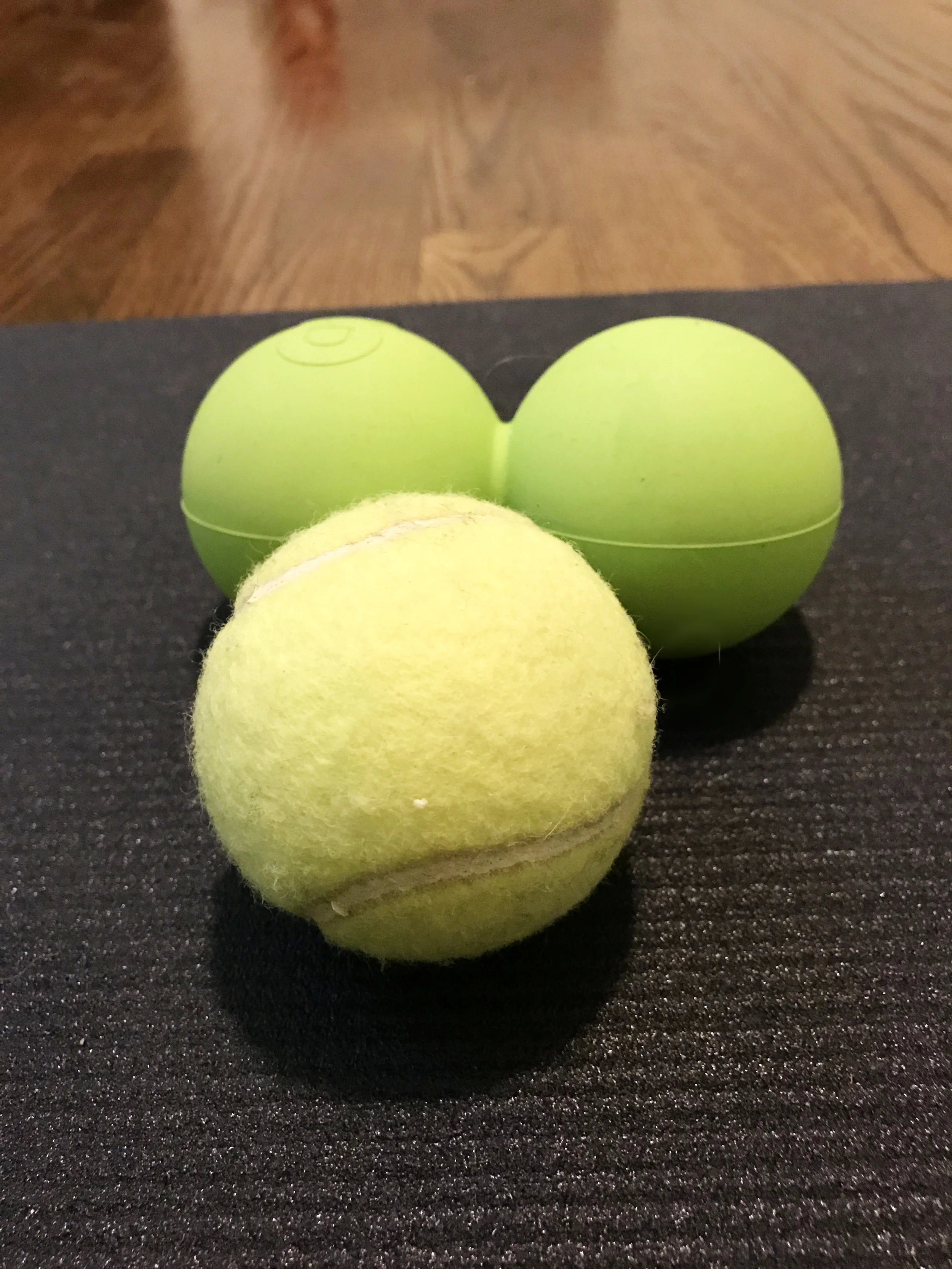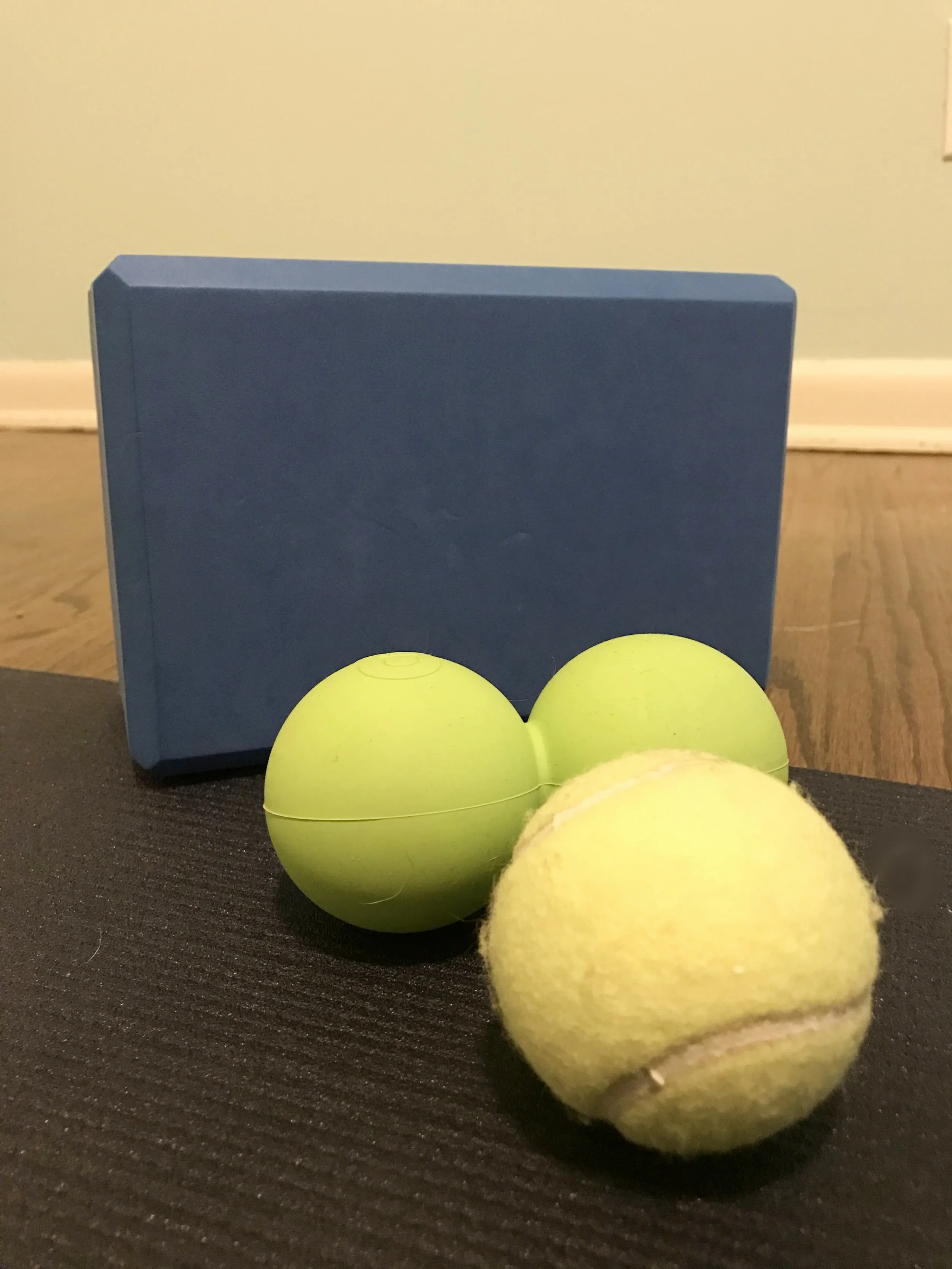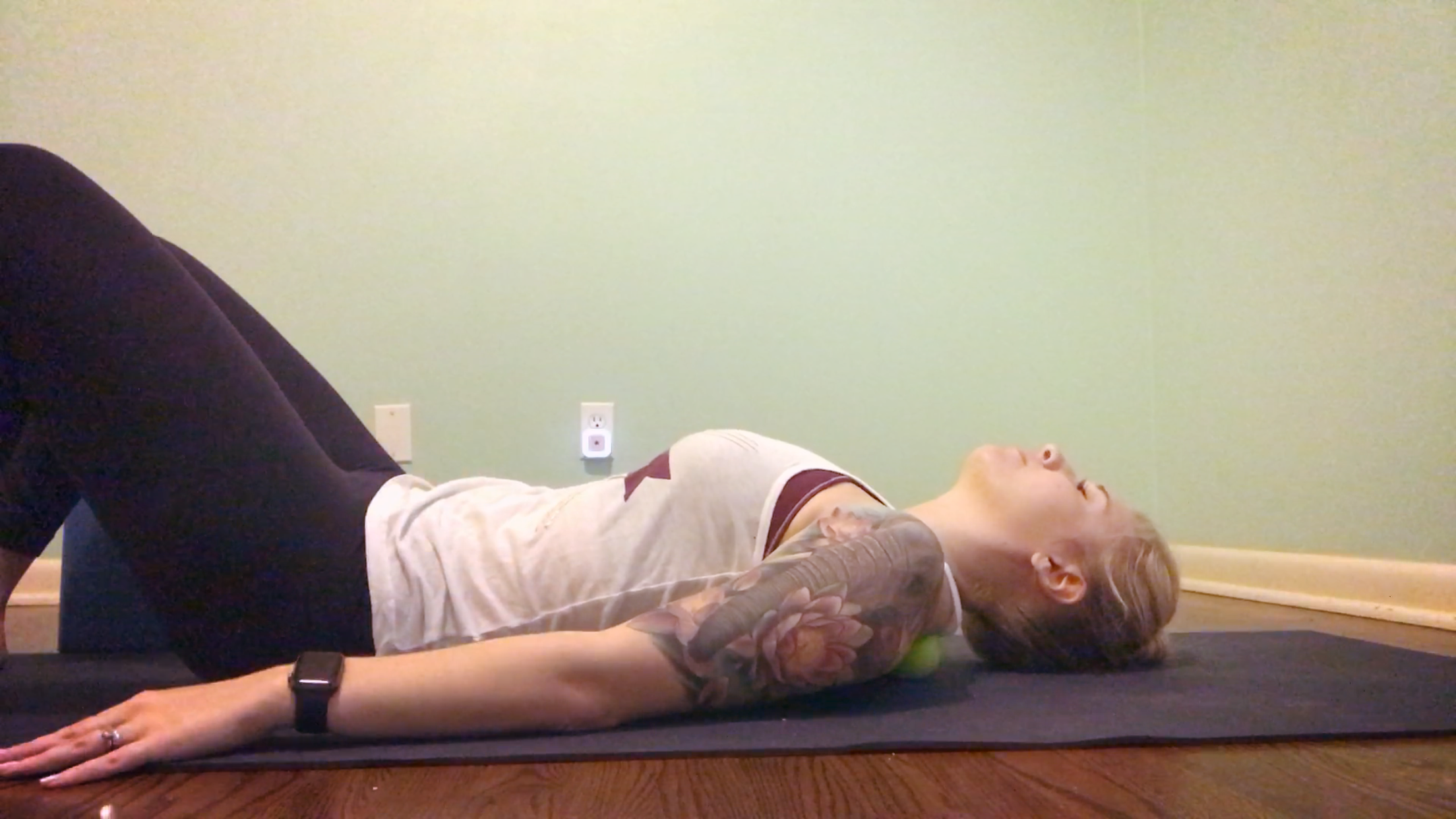These balls are everything
I'd run into them a few times. But before I went to San Francisco and took Bo Forbes' workshop I didn't really know how to use them properly. Once I learned how magical they could be I discovered that these balls are everything.
Of course, I'm talking about therapy balls.
I used to foam roll, but foam rollers pale in comparison to therapy balls. Therapy balls are like craft beer. The Bud Light Foam Roller used to be great. But once you've had a good Therapy Ball IPA the Bud Light Foam Roller is just like ... water.
Here's what I use.
A double therapy ball, a tennis ball and a yoga block. If you're buying some for yourself, I'd recommend buying individual balls like these. The block is optional, but if you already have one it can help you work some areas more.
If you have a lacrosse ball, you can use that. I live in Kansas. I don't even think I've seen a lacrosse ball. But if you have some lying around your house, give it a try.
Here's how I use them.
It's not exactly rocket science. I place the ball (or balls) on the tight area I want to work. Slowly, I mean really slowly, I start to move around. If I feel a "good spot" — you know that hurt-so-good sensation when you know you've found the winner — I pause in that spot for a few breaths.
I use the tennis balls if a spot is really tender because they're a little softer. Then I graduate to the firmer therapy balls. Some of my favorite areas to work with are low back, shoulders, chest, hamstrings and feet. (For feet, you just stand on the ball and slowly move around. This is especially wonderful after a long run.)
The block is helpful for areas like the chest. Its only purpose is to elevate the floor to bring it closer to you. It can be a little easier in some cases.
I've been having some SI joint pain lately, and working with therapy balls has helped immensely. They provide instant relief, but that relief also lasts.
It works.
Sometimes it hurts. And by sometimes I mean most of the time. It's not exactly like getting a relaxing massage. But holy guacamole is it worth it.
After even just 1-2 minutes of working an area, it's like your muscles melt. It feels as though you had a kink in your body's internal hose, and you released it. All the water can flow freely. Ahhh.
Dos and Don'ts
There are a few key dos and don'ts to keep in mind when working with therapy balls. They aren't quite as fail-proof as foam rollers, but as long as you keep these things in mind you'll be a real therapy baller in no time.
Do move very slowly.
Don't rush.
Do hold spots that feel extra tight.
Don't hold spots if you feel sharp or radiating pain
Do focus on muscle.
Don't roll on bone. Don't. Do. It.
Do work with tight, sore areas.
Don't work with swollen areas.
Why it works: Fascia
Fascia is the connective tissue that surrounds your muscles. I like to think of it like the white stuff on an orange that keeps the fruit together. I wrote more about fascia in this post, so give it a read if you're unfamiliar with your new BFF Fascia.
Using therapy balls in the way I described is called myofascial release. It helps your fascia be more fluid and less brittle so that your muscles can glide more easily.
Fascia is fascinating. So if you really want to geek out, give it a Google sometime. There's a ton of great information out there.
Whether or not you want to get geeky, try myofascial release. You don't even have to call it that if you don't want to. Just tell your friends you're experimenting with some balls. It will sound strange and mysterious. And you won't regret it.




